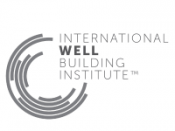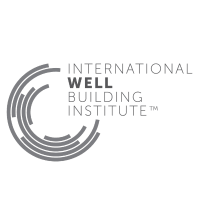
The average office worker typically spends more than one third of his or her day indoors. The conditions that a worker is exposed to indoors may potentially have an effect on their overall health. In 2013 Delos Company founded The International WELL Building Institute (IWBI) with the goal of improving individual health and wellbeing through the built environment. Through a framework of standards, the IWBI developed a third-party certification called the WELL Building Certificate.

The WELL Building Certificate may be poised to become another movement in the office industry. The idea behind the WELL Building Certificate is that wellness should be established as an integral part of the built environment. The standards of the WELL Building Certificate include availability to fresh food, circadian light design, physical & visual ergonomics, improved air & water quality and external exercise spaces.
Although the WELL Building Certificate is relatively new, some well-known companies in the real estate and construction industry have already begun to make the move towards investing in WELL properties. In 2013, CBRE’s global corporate headquarters in Los Angeles became the first WELL Certified pilot office. In June, the company achieved the WELL gold level in its Vancouver office by incorporating over 100 wellness features just two years after occupying 4 floors in the 35-story MNP Tower. Also, earlier this year, the construction company Structure Tone made history by becoming the first WELL Certified building in New York with the opening of its new 82,000 sq. ft. office at 330 West 34th St. in Manhattan.

In addition to committing to making their offices WELL Certified, CBRE has also developed an internal initiative to attain WELL Certification for nearly 100 of its managed properties. They have also become a founding member of the Well Living Lab™, which is designed to study the interaction between human health and well-being and the indoor environment. The Well Living Lab is a collaboration between Delos, the founders of the IWBI, and the Mayo Clinic, and is located near the Mayo Clinic in Rochester, Minnesota.
Landlords could receive higher rents on a WELL Certified building. It may also increase the marketability of properties in order to attract tenants. There may also not be much additional investment required for a building seeking WELL Certification that is already seeking LEED certification. The certification process is overseen by the Green Business Certification, Inc. (“GBCI”), the same organization that oversees the LEED certification process. WELL goes hand-in-hand with LEED and where LEED seeks to improve the building’s impact on the environment, WELL seeks to improve the building’s impact on its inhabitants. Some of the credits for both programs overlap and if a building is already seeking LEED Certification the additional costs of seeking WELL may be minute.
Although the WELL Building certificate is new and extensive research has not been done to study its long-term effect on the marketplace, the LEED rating system has been around for more than twenty years. The US Green Building Council notes that since its inception in 1994, over 90,000 projects have used the system. Over that time several studies have been conducted on the market value of building to LEED standards. In Feb 2015, the USGBC published an article entitled “The Business Case for Green Building” where they cited several studies stating the business case for investing in green buildings. One of the main benefits of building green was increased demand from both clients and the market. It was noted that in 2013, green building constructions grew by 20% in all commercial real estate.
The article went on cite several other benefits for building green, including the ability to attract tenants, increase productivity and worker satisfaction, better health standards for tenants, increased rents and lower operating costs. Because wellness is so closely linked to environmental factors, it may be that the WELL building standards have the same long-term impact as LEED. However, more long-term studies need to be conducted in order to quantify WELL’s true impact. Over the last 20 years the LEED building rating system has grown exponentially. This is partly due to the increased awareness of the impact of the built environment. Over that same time, we have also seen an increased awareness towards personal wellbeing. Perhaps the WELL building system is what is needed to merge those two paradigms.
